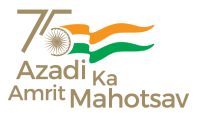Evolution of Insurance
- Evolution of Insurance
- Regulations
- Public Notices
- List of Registered Insurance Entities
- Grievance Redressal
- Insurance Products
- About Microinsurance
-
FAQs
- ACTUARIAL
- AGENCY DISTRIBUTION
- BROKERS
- COMMUNICATIONS
- CORPORATE AGENTS
- DISTRIBUTION DEVELOPMENT
- ENFORCEMENT
- FAQs on Guidelines on Standard Personal Accident Insurance Product: Saral Suraksha Bima
- FAQs on Individual Covid Standard Health Policy: Corona Kavach Policy
- FAQ's on Standard Health Product Arogya Sanjeevani Product
- FINANCE & ACCOUNTS (LIFE)
- FINANCE & ACCOUNTS (NON LIFE)
- GRIEVANCE CELL-PPGR
- HEALTH DEPT
- IMF FAQs
- INFORMATION TECHNOLOGY
- Supervision
- INTERNAL ACCOUNTS
- LIFE
- NON LIFE
- SURVEYORS
- VIGILANCE
Evolution of insurance in India
In India, insurance has a deep-rooted history. It finds mention in the writings of Manu (Manusmrithi), Yagnavalkya (Dharmasastra) and Kautilya (Arthasastra).
The writings talk in terms of pooling of resources that could be re-distributed in times of calamities such as fire, floods, epidemics and famine. This was probably a pre-cursor to modern day insurance. Ancient Indian history has preserved the earliest traces of insurance in the form of marine trade loans and carriers’ contracts. Insurance in India has evolved over time heavily drawing from other countries, England in particular.
The advent of life insurance business in India
1818
Advent of life insurance business in India
1914
Government of India started publishing returns
1950
The Insurance Amendment Act of 1950 abolished Principal Agencies
1956
Life Insurance Corporation came into existance
The history of general insurance
The history of general insurance dates back to the Industrial Revolution in the west and the consequent growth of sea-faring trade and commerce in the 17th century. It came to India as a legacy of British occupation.
1850
The British establish the Triton Insurance Company Ltd
1907
The Indian Mercantile Insurance Ltd, was set up
1957
General Insurance Council is formed
1968
Insurance Act was amended
1973
General insurance business was nationalized
The process of re-opening
This millennium has seen insurance come a full circle in a journey extending to nearly 200 years. The process of re-opening of the sector had begun in the early 1990s and the last decade and more has seen it been opened up substantially. In 1993, the Government set up a committee under the chairmanship of RN Malhotra, former Governor of RBI, to propose recommendations for reforms in the insurance sector.The objective was to complement the reforms initiated in the financial sector. The committee submitted its report in 1994 wherein , among other things, it recommended that the private sector be permitted to enter the insurance industry. They stated that foreign companies be allowed to enter by floating Indian companies, preferably a joint venture with Indian partners.
April, 2000
The IRDA was incorporated as a statutory body
August 2000
The IRDA opened up the market
December, 2000
the subsidiaries of the General Insurance Corporation of India were restructured as independent companies
July, 2002
Parliament passed a bill de-linking the four subsidiaries from GIC in July, 2002.
The insurance sector is a colossal one and is growing at a speedy rate of 15-20%. Together with banking services, insurance services add about 7% to the country’s GDP. A well-developed and evolved insurance sector is a boon for economic development as it provides long- term funds for infrastructure development at the same time strengthening the risk taking ability of the country.
Ref. No: IRDA/GEN/06/2007 | Published Date:12/05/2021 | Last Updated: 6:30 PM 31-07-2020
Views: 1963






